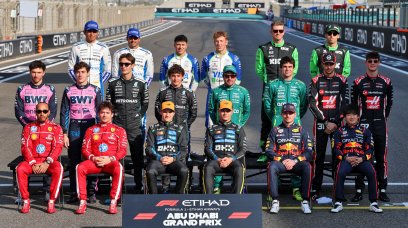1992 Formula 1 World Champion Nigel Mansell has hailed the current standard of safety in the sport, even though he feels some circuits and corners have been 'sterilised' as a result. Mansell's F1 career began in 1980, at a time when serious injuries and even fatalities were more commonplace than today, and the Briton himself was obliged to sit out races in 1982 and 1987 after having been injured in accidents. As driver safety has become an increasingly pressing issue in recent years, many corners have been altered in order to slow cars down, with large amounts of tarmac run-off also installed – a development which Mansell laments, despite the lesser risk of injury. "The shockwave went through all the circuits throughout the world and they were sterilised," Mansell said in an interview with Adrian Flux . "So all the fast, dangerous corners were taken away – they were obliterated, which was a great shame. A lot of the fast corners now, you've got these enormous run-off areas, the kerbs are very small. You can make a mistake and drive off the circuit and drive straight back on. "When we used to make a mistake years ago, we paid a penalty. We hit something – the Armco, the concrete wall. "You say about people dying, there were [also] so many people injured out of the sport – broken leg, broken arm, broken back. They just weren't physically able to drive a Formula 1 car for the rest of their lives."
Mansell – Modern F1 drivers feel superhuman
Mansell also referenced the changes to F1 safety that were implemented after the 1994 San Marino Grand Prix weekend, in which Ayrton Senna and Roland Ratzenberger lost their lives, becoming the first drivers to die in F1 cars since Elio de Angelis in 1986. "In 1994, a month or so after the terrible double fatality, the whole Formula 1 perspective changed for ever more," said the Briton. "From a driver's point of view, it's Christmas on sticks. They feel like they are superhuman. They can have the most heinous accidents with the cars presently and walk away from it. It's astonishing. "Sometimes the old drivers wince and go 'oh, it's going to be terrible', but then the driver just hops out of the cockpit and off back to the pits and they're fine, which is fantastic."
Mansell hails 'amazing' technological advancement
The majority of Mansell's F1 career took place in an era without driver aids such as power steering and semi-automatic gearboxes, and the Briton noted that the current F1 cars do not pose as much of a physical challenge to drivers as their predecessors did. "The [drivers] get out at the end of some of the races and it looks like they have just come out of the barber's," said Mansell. "There's no sweat, there's no nothing because the biggest thing that's been designed in a Formula 1 car is power steering. We needed to have really strong arms and catch the car in a corner, and if you didn't have the physical strength to hang on to a Formula 1 car you went off and had an accident. Now you drive it with one finger. "It's opened the sport up to a lot of drivers that didn't actually have the physicality. You had to be strong, you had to be a bit of a brute years ago. If you were, you could make up some speed during a race because you used to get physically whacked out, like really whacked out, like 'I can't drive anymore, I just can't breathe anymore', especially with the ground effect. "Now, with the seats and the technology, you've got 30 to 50 engineers balancing the car for the driver telling them to keep the car in balance, do this. "We had one engineer, a designer and a head analyst but we did it ourselves. It's changed beyond all belief and it's amazing where the sport is today."
Most read









